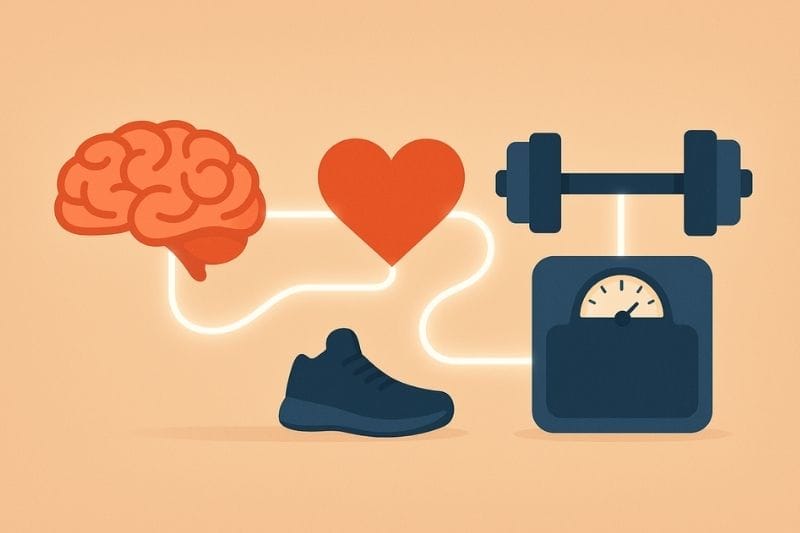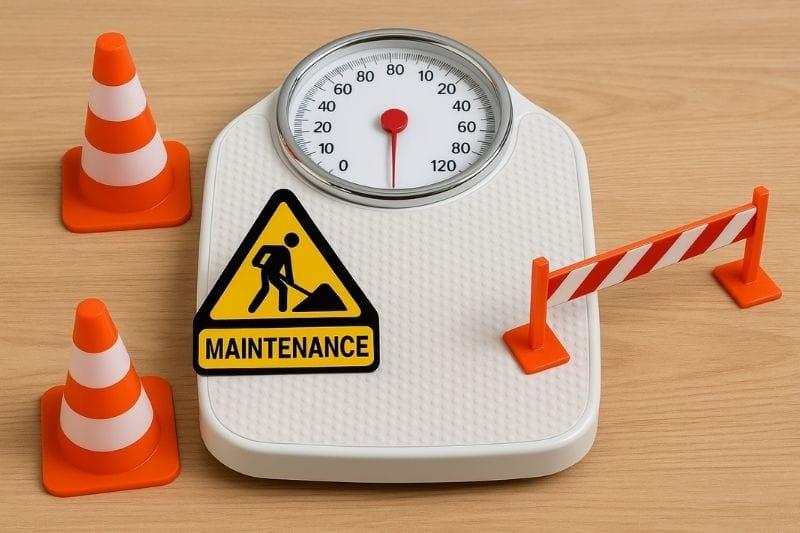Can you lose weight and still perform well when training for a race or event? It is a question many runners and cyclists quietly wonder about. The truth is, it is absolutely possible, but it takes a smarter approach than simply cutting calories and hoping for the best.
Many people start a training block hoping to improve performance while dropping a bit of weight. They picture faster parkruns, stronger long rides, and better race results. On paper it seems straightforward. You are moving more, so the weight should come off. In reality, the body has other ideas. Appetite increases, recovery demands rise, and the scales can be stubborn.
The good news is that you can fuel for performance and manage weight at the same time. It just requires a balanced strategy that supports your training rather than fighting against it.
Why Weight Loss During Race Training Can Be Tricky
When training ramps up, so do hunger levels. Your body needs energy to recover and adapt, and if that energy is not there, you feel flat, recovery slows down, and sessions start to suffer. A big calorie deficit might work for a short period, but it quickly catches up with you.
Runners often find this during long run season. They cut calories during the week, head out for a two hour Sunday run under fuelled, and hit the wall halfway through. Cyclists experience the same thing on longer rides, especially if they skip breakfast and rely on coffee to get them through.
On top of that, water retention from hard training can mask fat loss on the scales. It is common to train consistently for a few weeks and see your weight stay the same, or even go up slightly. This is usually temporary and reflects your body holding extra fluid to help muscles repair.
Set Realistic Weight Loss Goals
Race and event training is not the time for rapid weight loss. A small, steady loss works best, and in some cases maintaining weight is smarter until after the event. Half a pound to a pound a week is a sensible ballpark if weight loss is a goal.
It also helps to shift the focus slightly. Instead of obsessing over the number on the scales, look at body composition and performance. Notice how clothes fit, how your long runs or rides feel, and whether you are recovering well between sessions.
Some people do not lose much actual weight during a training block but see clear changes in shape, fitness, and confidence. These are all valid markers of progress.
Fuel Your Training Properly
This is the part most people get wrong. They try to create their calorie deficit by under-fuelling training sessions, but this often backfires. You feel drained, quality drops, and hunger spikes later in the day, leading to overeating in the evening.
Fuel the session first, then adjust the rest of the day around it.
For runners, this might mean a slice of toast with jam before a long run, or a banana before parkrun to take the edge off early fatigue. During long runs, drip feeding energy with gels or drinks every 30 to 40 minutes helps you maintain pace and finish strong.
For cyclists, fuelling long rides is just as important. Starting a sportive or training ride on an empty tank is a recipe for crawling home. A decent breakfast plus small amounts of carbs every 30 to 45 minutes keeps energy levels steady and avoids the dreaded bonk.
After training, eat something that combines carbs and protein to kickstart recovery. This might be porridge with milk, eggs on toast, or a chicken and rice bowl. It does not need to be fancy, but it does need to happen fairly soon after the session.
Create a Small, Sustainable Calorie Deficit
The calorie deficit should come from your overall daily habits, not from cutting out the fuel that supports your training. Look for small, sustainable tweaks.
Examples include trimming back on calorie dense extras like alcohol, sugary drinks, oversized portions, or mindless snacking. Be mindful of weekend eating too. It is easy to justify large meals and desserts after a long run or ride, but this can quickly eat into any deficit created during the week.
Rest days are another area to watch. Appetite can be high on rest days, but energy expenditure is lower. Keeping meals balanced and protein rich helps manage this without feeling restricted.
Prioritise Protein and Nutrients
Protein plays a big role in recovery, muscle maintenance, and appetite control. Aim to spread it across your meals rather than cramming it all into dinner. This helps you feel satisfied and supports training adaptations.
Pair this with plenty of fruit, vegetables, whole grains, and healthy fats. These provide the vitamins, minerals, and fibre your body needs to handle the increased training load. Balanced meals also help you avoid the peaks and crashes in energy that lead to overeating.
Here are two simple examples:
- Runner’s breakfast: Porridge made with milk, topped with banana and a small handful of nuts.
- Cyclist’s lunch: Chicken breast with couscous, roasted vegetables, and a drizzle of olive oil.
Adjust Expectations Around Race Performance
Trying to lose weight aggressively while training for a key event can limit your potential. If performance is the top priority, it might make sense to focus fully on training and recovery, then shift weight loss goals to the post-race phase.
For longer training blocks, a slow, steady loss can work well, but it needs to be flexible. As mileage or riding volume increases, so does the need for energy. Listening to your body and adjusting your intake is more effective than rigid dieting.
Common Mistakes to Avoid
- Skipping pre-training fuel and running out of energy halfway through
- Treating every session as a licence to overeat
- Weighing daily and reacting emotionally to normal fluctuations
- Ignoring recovery meals and snacks
- Dropping strength training, which can support better body composition
When Weight Loss Can Wait
Sometimes the most effective strategy is to press pause on weight loss until the big event is done. Training for a marathon, half marathon, or a long sportive is physically demanding. Adding a strict diet on top can be too much.
Maintaining weight during the peak training period can help you recover better, train harder, and enjoy the process more. Once the event is finished, you can switch focus and create a more structured fat loss plan without the pressure of long training sessions.
Bringing It All Together
You do not need to choose between performance and weight loss, but the two goals must work together. Fuel your training properly, create a small deficit through everyday habits, and stay patient.
Small changes, applied consistently, will give you better results than big, unsustainable swings.
Coaching Support
If you are training for a race or event and want to manage your weight without wrecking your performance, coaching can make a huge difference. I help runners and cyclists get leaner, stronger, and faster with realistic plans that fit busy lives:




